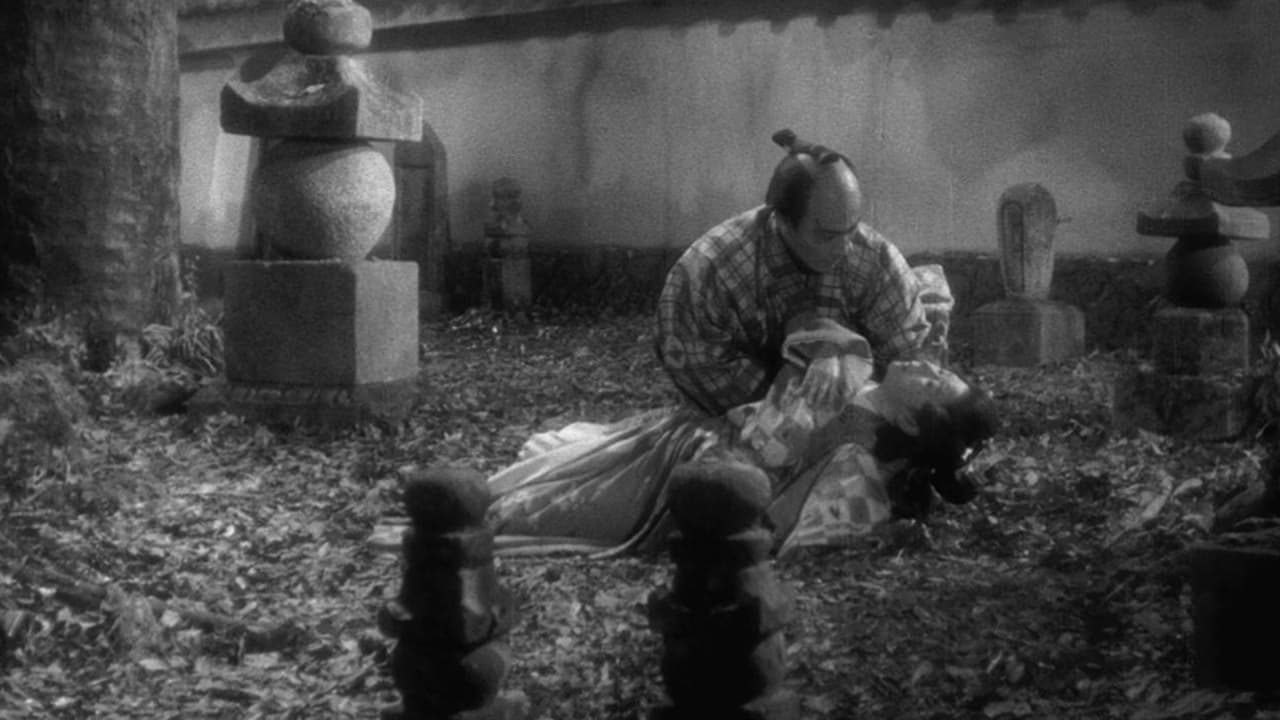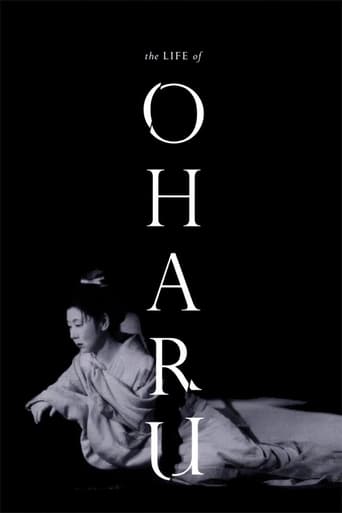

It's no definitive masterpiece but it's damn close.
... View MoreBest movie of this year hands down!
... View MoreA Brilliant Conflict
... View Morea film so unique, intoxicating and bizarre that it not only demands another viewing, but is also forgivable as a satirical comedy where the jokes eventually take the back seat.
... View MoreI finally saw Life of Oharu at the Ontario Cinematheque in Toronto last night and what an amazing film it was.I don't know why I held out on Mizoguchi for so long. I think it's because I watched a lot of Ozu in the day and expected more of the same heavily restrained, obliquely symbolic style which is often as alienating as it is inventive. I couldn't have been further off the mark. Mizoguchi's style is fluid and assured like Hitchcock and Bresson. He also injects a warmth of spirit and shows a genuine interest in storytelling which is often absent in much of Ozu's ouevre.The Story of Oharu is a treatise on how women are economically exploited in a patriarchal society. This is probably one of the greatest 'women's films' ever made. It ranks above 'Breaking The Waves' and Sirk's 'Imitation of Life'. No small feat!! If you like stories that actually say something about the world in which we live, I would strongly recommend this film. It's a masterpiece of world cinema. I am definitely going to see more Mizoguchi.
... View MoreIt was sickening to witness how Ohara was treated by the noble men of high rank and even by her father. She is a strong and proud woman, but she has a series of misfortunes of things she could not very well control herself. Because of her looks, her pride and her birth she is put, mostly by force, into various agreements that are disgrading and she meets little compassion.That said, as this is based on a novel by Iharu Saikaku, it has strong tendencies towards being epic in approach. This is not a bad thing, but it takes on being a fairytale almost instead of gaining credibility like say 'Donzoko' by Kurosawa. For emotional impact Mizoguchi is an absolute master however and this tragic tale could not be outdone by any other.
... View MoreI cannot agree with the reviewer who commented that Mizoguchi does not have the aesthetic sensibility of Kurosawa or Ozu. In fact, he appears to me to be the true master of Japanese cinema. 'Oharu' is a marvellous achievement - a compassionate, beautiful account of a quite astonishing fall from privilege and grace into destitution and despair. It is unremittingly bleak and yet due to Mizoguchi's genius and Kinuyo Tanaka's luminous portrayal of the unlucky Oharu, it is a spiritually compelling work, with sheer artistry and simple human empathy competing for our attention in every take. Breathtaking film-making of the highest quality.
... View MoreKenji Mizoguchi's Life of Oharu is the tragic, humanistic tale of, well, the life of a woman named Oharu. Born into luxury, she errs with a man of lower class. For this offense, she is exiled along with her parents, convicted of letting their child run wild. As the film progresses, Oharu goes through about a thousand hardships - hell, any normal person would have killed herself after experiencing just the first of Oharu's hardships! Life of Oharu is very heavy, but it avoids emotional manipulation. It even has a couple of humorous moments. If you doubt me, watch the scene where the jealous wife pesters her husband, trying to force him to admit that he first met Oharu at a brothel. The man is being shaved by his personal barber, and his wife keeps riding up on his side. So the husband lifts his mirror and walks a few spaces away, just to have his wife sidle up right against him again! The climax to this particular episode (the part with the cat, if you're confused) is also quite humorous. Still, most of the film is heart-rending. It's also amazingly directed by Mizoguchi. His camera movement is exquisite, absolutely exquisite. I was left a little disappointed in Sansho the Bailiff, often said to be his best film, but the direction of Oharu is original and masterful. The acting is also wonderful. 10/10.
... View More